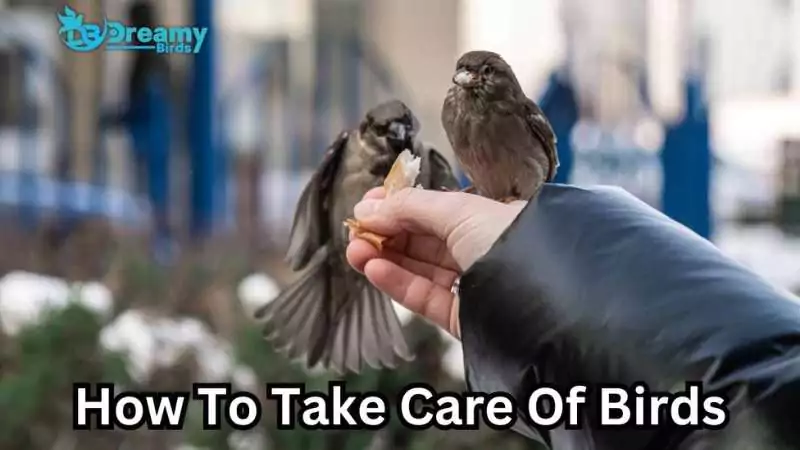Did you know that a parrot can live as long as a human? When learning how to take care of birds, thinking long-term is crucial. So, how to take care of birds?
To care for birds, follow these steps:
1) Choose the right bird considering lifespan and behavior.
2) Set up a spacious, well-placed cage.
3) Feed a balanced diet of pellets, fruits, and vegetables.
4) Maintain regular cage cleaning and health checks.
5) Engage daily for emotional well-being.
6) Provide toys and perches for stimulation.
This blog will guide you through each essential step, ensuring your feathered friend thrives under your care. Get ready to spread your wings into the delightful journey of bird parenthood!
Essential Steps for Bird Care
Before we dive into the essential steps, let’s share a fascinating insight. A recent poll among our bird care community revealed that 70% of bird parents noticed improved health in their birds with daily interactive play sessions. This highlights the importance of the journey we’re about to embark on.
Step 1: Choosing the Right Bird
Ready to welcome a feathery pal into your home? Great! But let’s pause and ponder – selecting the right bird is a crucial first step. Consider their lifespan first. Some birds, like parrots, can live for decades, demanding a long-term commitment. Then, factor in their friendliness.
Are you up for the social needs of a chatty parakeet, or would you prefer the more independent nature of a canary?
Care needs are also crucial. Each bird species has unique dietary requirements, space needs, and social preferences. Busy folks might favor low-maintenance finches, while those with more time might enjoy the engaging company of a cockatiel.
For beginners, budgies and canaries are top picks. They’re relatively easy to care for, and their cheerful songs can brighten any day. Before making a choice, consider the long haul – are you ready for the commitment? Can you handle the delightful quirks of bird life?
Your perfect feathered match is out there. Just ensure you choose a bird that aligns with your lifestyle and expectations. Here’s a beginner’s guide to choosing pet birds. Remember, it’s about finding a companion who fits into your life!
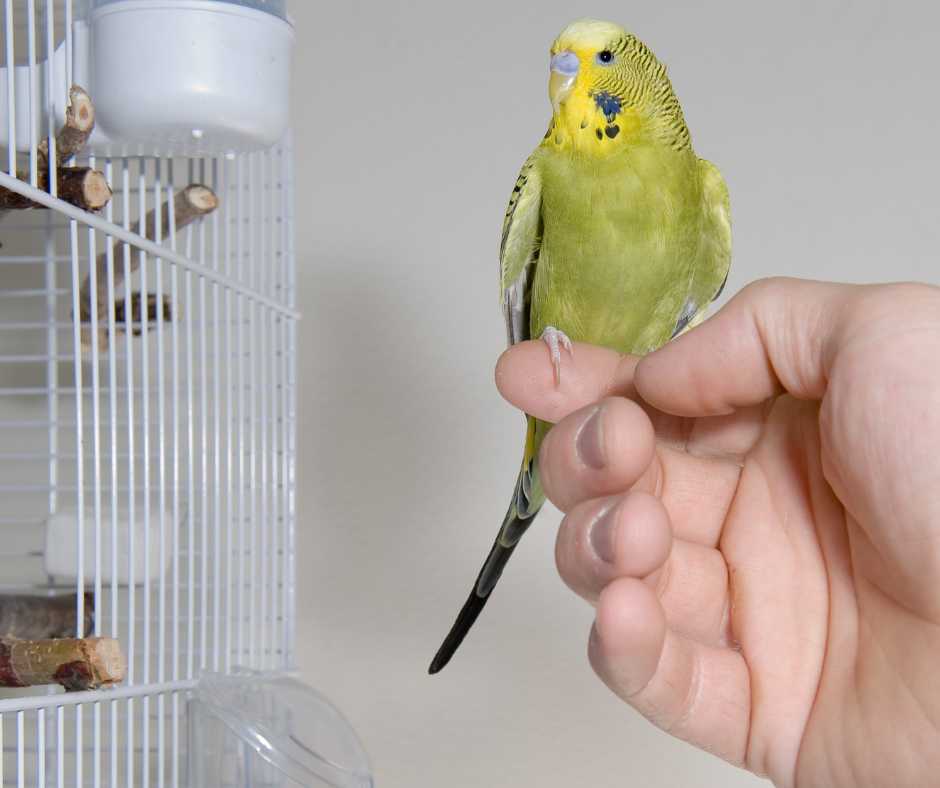
Step 2: Setting Up the Perfect Home
Let’s get into bird real estate! Finding the right cage for your feathered friend is crucial. It’s their haven, so size and location count big time.
Your bird needs ample space to stretch, play, and exercise – think of it as their mini-mansion. Too small and cramped; too big, and it might be overwhelming.
The cage’s spot in your home is vital. You want a balance – a place where your bird can socialize with the family but also have its peaceful corner. A living room corner away from direct sunlight and drafts is usually a hit. It’s like giving them a room with a view but ensuring it’s safe and comfy.
Indoor or outdoor, what’s your pick? Indoors keeps them safe from the elements and predators, making interaction easy. Outdoor aviaries offer a more natural environment, great for fresh air and sunshine, but ensure they’re predator-proof and sheltered.
And let’s not forget about cage design – enough room for toys and perches, and easy to clean. Here’s a quick guide to help you choose.
Remember, the right cage makes all the difference. It’s not just a cage; it’s their home sweet home!
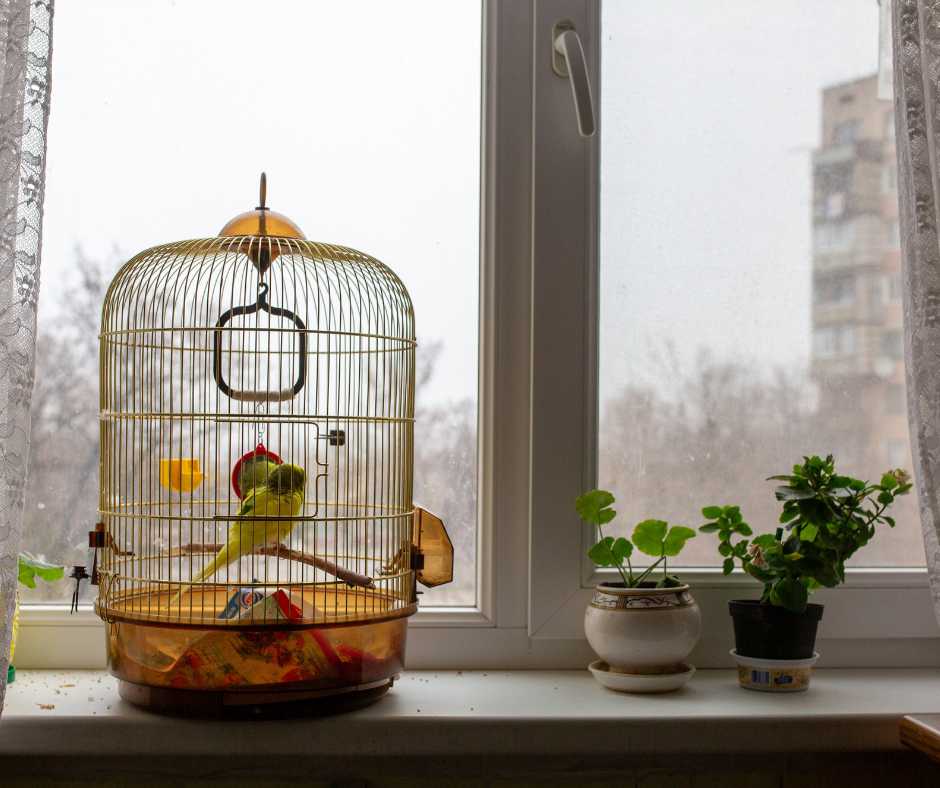
Step 3: Nutritional Needs and Feeding
Alright, let’s chat about your bird’s diet – it’s more than just sustenance, it’s about providing a culinary adventure! A well-balanced bird meal plan should primarily consist of 75-80% high-quality bird pellets. Think of these pellets as the cornerstone of their diet, much like a nutrient-packed superfood salad for humans.
But here’s where we can get creative. Alongside pellets, an innovative way to enrich your bird’s diet is to include a mix of fresh fruits and veggies – but let’s go beyond the usual fare. Have you considered offering cooked quinoa or a tiny amount of chia seeds soaked in water? These are nutritious and introduce new textures and flavors, keeping mealtime exciting.
Remember, variety is vital. Introduce new items gradually and observe how your bird responds. And yes, while some fruits and veggies are a no-go (like the notorious avocado), exploring less common options can offer unique health benefits. For instance, dandelion greens are great for liver health, and a small amount of fresh ginger can aid digestion.
Portion control remains crucial. Overfeeding, even with healthy options, can lead to health issues. Establish a consistent feeding schedule and stick to measured portions to maintain your bird’s optimal health.
Here’s a comprehensive resource for more unique dietary ideas and in-depth nutritional advice. Remember, a well-fed bird is a happy bird, but it’s about striking the right balance and keeping things exciting and healthy!
Step 4: Daily Health and Hygiene Practices
When it comes to our feathered friends, health and cleanliness are paramount. Just like you wouldn’t skip your regular check-ups, routine health checks for your bird are super important.
Dr. Brian Speer, an acclaimed avian veterinarian and co-author of ‘Birds for Dummies,’ emphasizes, ‘Regular health check-ups are essential for pet birds. Many bird owners don’t realize their bird is sick until it’s too late. Birds are adept at hiding illness, so these check-ups can be life-saving.’
These check-ups are vital for monitoring their weight, feather condition, and overall health, akin to taking your car for a regular tune-up.
Now, let’s talk about hygiene. Keeping your bird’s living space clean isn’t just about aesthetics; it’s crucial for their health. A clean cage means a happy, healthy bird, akin to their own personal spa retreat.
Regular cleaning of food and water dishes, wiping down surfaces, and replacing cage liners are all essential for creating a fresh and tidy environment.
But what if your bird isn’t looking its best? Birds are masters of disguise when ill. So, put on your detective hat and look for clues, such as a decrease in appetite or a quieter demeanor.
Responding promptly to these signs is crucial. Remember, the earlier you catch an illness, the better the chances for your bird’s recovery.
In a nutshell, think of your bird’s health and hygiene as parts of a puzzle. Each piece, from regular vet visits to a spotless cage, combines to create a complete picture of your bird’s well-being. Keep these pieces in place, and you’re on your way to being a top-notch bird parent!
Step 5: Understanding and Managing Behavior
Welcome to the fascinating world of bird personalities! Just like us, birds have their unique quirks and behaviors. Understanding these can be as amusing and bewildering as figuring out a puzzle.
Common issues you might encounter include feather plucking – sort of like their version of nail-biting when stressed – and excessive squawking, which might mean, “Hey, I need some attention over here!”
Interaction is key. Spending time with your bird daily isn’t just for their entertainment; it’s essential for their emotional well-being.
Think of it like having a coffee with a friend – they need that social time to feel loved and connected. This daily bonding helps prevent behavioral issues that stem from boredom or loneliness.
Now, managing these behaviors? That’s where the real art comes in. If your bird gets a bit too loud, it might be trying to tell you something – maybe it’s bored, hungry, or wants your attention.
Feather plucking, on the other hand, can be a sign of stress or anxiety. It’s like when we bite our nails. Creating a stimulating environment with toys and activities can help ensure they have a balanced diet and a comfortable living space.
Sometimes, birds need to burn off some energy, so ensure they have enough space and time outside their cage to flap those wings. Remember, patience is your best friend here. Every bird is different, and understanding their unique needs and responding to them is what makes you a great bird parent.
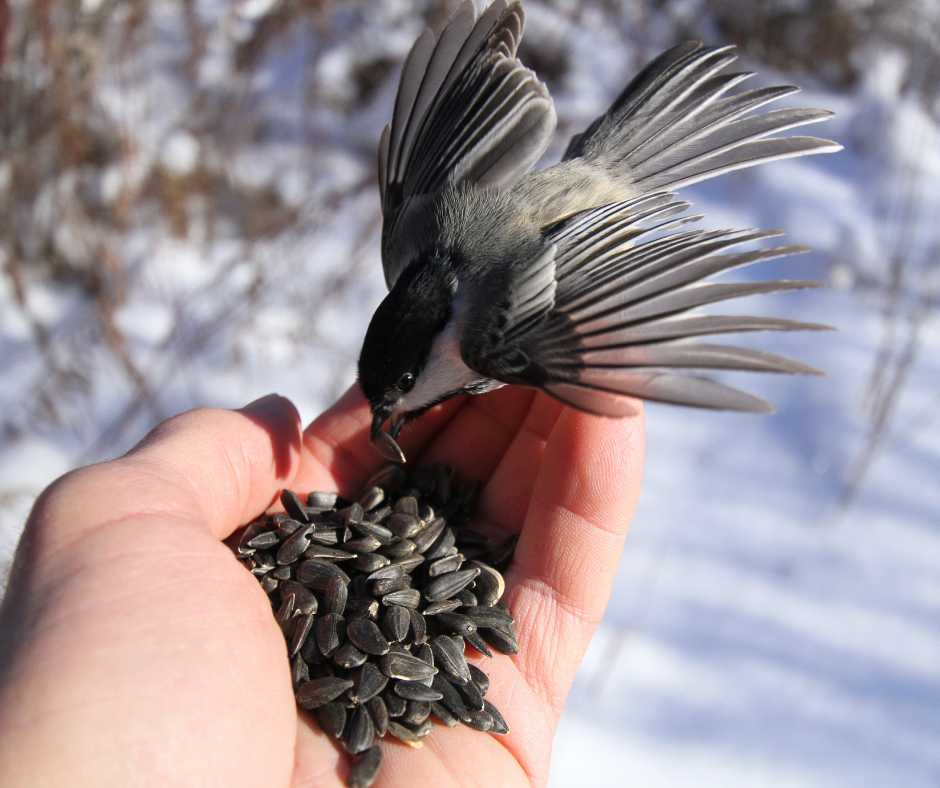
Step 6: Enrichment Through Toys and Perches
Think about it: would you enjoy sitting around all day with nothing to do? Nope, neither do birds! Their world needs to be filled with fun and stimulating toys and perches. Like a kid in a playground, birds love exploring and playing. It keeps their minds sharp and bodies active.
When choosing toys, variety is the spice of life. Go for different textures, sizes, and shapes. Some birds love solving puzzles, while others prefer something to chew or shred.
Remember, it’s not just about entertainment; these toys help replicate natural behaviors, like foraging and exploring. And perches? They’re like their personal fitness equipment. Different diameters and textures help keep their feet healthy and strong.
But here’s the fun part: you can become a DIY guru for your bird! Creating toys can be an enjoyable and rewarding experience.
Think of simple things like a rope tied into knots or a piece of untreated wood they can peck at. It’s not just about saving a few bucks; it’s about crafting something unique for your birdie buddy.
Need some DIY inspiration? Here are some excellent ideas to get you started. Remember, enriching your bird’s life with toys and perches isn’t just a luxury; it’s an essential part of their care. So, let’s get creative and keep those feathered friends happily flapping and chirping!

Ways to Train Your Bird
Training time – and yes, it’s doable with your bird! Think of it like teaching a tiny, feathered student. Start with the basics, like stepping onto your hand or coming when called. These simple commands lay the foundation for more advanced tricks down the road.
And guess what? You can even potty train your bird! With patience and consistency, you can teach them to do their business in designated areas – no more surprise gifts on your shoulder!
Training is more than just a cool party trick; it’s about engaging their brain and strengthening your bond. It’s like playing a fun game that brings you closer. Each successful command builds trust and understanding between you and your feathered pal.
But let’s not forget about health – specifically, keeping those pesky parasites at bay. Regular vet check-ups are crucial for spotting and dealing with these uninvited guests. And cleanliness is your first line of defense. A clean cage and good hygiene practices go a long way in preventing parasite infestations.
Want to dive deeper into bird training and health? Here’s a helpful resource. Remember, training and health care are integral parts of bird parenting. They keep your bird happy, healthy, and sharp, making your journey together even more rewarding.
So, grab some treats, roll up your sleeves, and let the training fun begin!

Process of Socializing Your Bird
Socializing your bird is like nurturing a budding friendship – it’s all about patience and gentle steps. Birds, just like us, have unique personalities and comfort zones. Your new feathered pal might need time to get used to you and their new environment.
Kickstart the bonding process by spending time near their cage daily. Talk to them in a soft voice or play some soothing music. It helps them get comfortable with your presence. Treats are your secret weapon here – they work like magic in breaking the ice.
Think slowly and steadily when introducing your bird to new people or experiences.
Overwhelming them with too many new faces at once is a no-no. Start with one new person at a time and let your bird adjust at their own pace.
A well-socialized bird is a happy bird. Regular interaction helps prevent loneliness and stress and can keep behavioral issues like feather plucking at bay. So, take it easy, be consistent, and soon enough, you’ll see your bird transform into a social champ.
Check out this guide for more tips. Remember, the bond with your bird grows stronger with each patient and gentle interaction!
Addressing Specific Care Concerns
Bird care, like any pet care, comes with unique challenges and joys. Especially when dealing with exceptional cases like baby birds, small birds, non-flight birds, or those with injuries, you’ve got to up your care game.
Special Care for Small and Baby Birds
Small and baby birds are like tiny treasures needing extra attention. They require a warmer environment to maintain their body temperature, so consider getting a small heater or extra insulation for their cage.
Their diet? It’s all about easily digestible foods. For the little ones, specially formulated baby bird food is your go-to. It’s like baby formula, packed with all the nutrients they need to grow strong and healthy.
Caring for Non-Flight and Injured Birds
Non-flight and injured birds need a setup that accommodates their limited mobility. Their perches should be lower, and the cage layout needs to be simple and accessible.
It’s like rearranging a house for comfort and safety. Regular check-ups with an avian vet are crucial to monitor their health and recovery progress.
Dealing with Common Queries About Bird Care
You might wonder, “How often should I clean the cage?” or “What’s the best way to introduce my bird to new foods?” Remember, cleanliness is next to birdie happiness, so daily clean-up of their space is essential. Introducing new foods? Go slow, mix them with their current favorites, and watch for any changes in their eating habits.
Cost Considerations and Time Commitments
Now, let’s talk about the financial side of things. Yes, owning a bird can be heavy on the wallet. The costs add up from nutritious food to suitable housing, toys, and regular vet visits.
But trust me, their joy and companionship are worth every cent. Time commitment is another factor. Birds need daily interaction, regular cleaning, and feeding, so ensure you’re ready for this long-term commitment.
Remember, each bird is unique, with its own needs and personality. Whether it’s a tiny parakeet or a majestic macaw, they all need your love, care, and attention. So, embrace the journey of bird parenthood – it’s filled with chirps of joy and flaps of happiness!
Here’s a bit more on bird care essentials. With the proper care and commitment, you and your feathered friend are set for a beautiful adventure together.
Advanced Bird Care Topics
As you become a pro at bird parenting, it’s time to dive into the deeper waters of avian care. Each bird species, from the vibrant parrots to the chirpy canaries, has its unique needs.
Understanding these differences is vital. For example, African Greys are known for their intelligence but can be prone to anxiety, while Budgerigars are social and active. Tailoring your care to fit their specific needs makes all the difference.
When handling emergencies and health issues, being prepared is your best defense. Birds can sometimes hide their illnesses until it’s pretty advanced, so knowing the signs of common health problems is crucial.
Respiratory issues, changes in eating habits, or lethargy – these are all red flags. Having a vet specializing in avian care on speed dial is a great idea.
As your feathered friend ages, their care needs evolve. Senior birds might not be as spry as once and could require a diet change to suit their slower lifestyle.
Just like humans, their joints get creaky and may be more prone to health issues. Regular vet check-ups become more important to catch any age-related problems early.
Remember, the journey with your bird is a marathon, not a sprint. It requires patience, dedication, and a willingness to learn and adapt as you go. From the energetic days of their youth to the quieter times of their senior years, being there for them through every flap and chirp makes them a fantastic bird parent.
Remember, each day with your bird is an opportunity to learn and grow together in this beautiful journey of avian companionship!
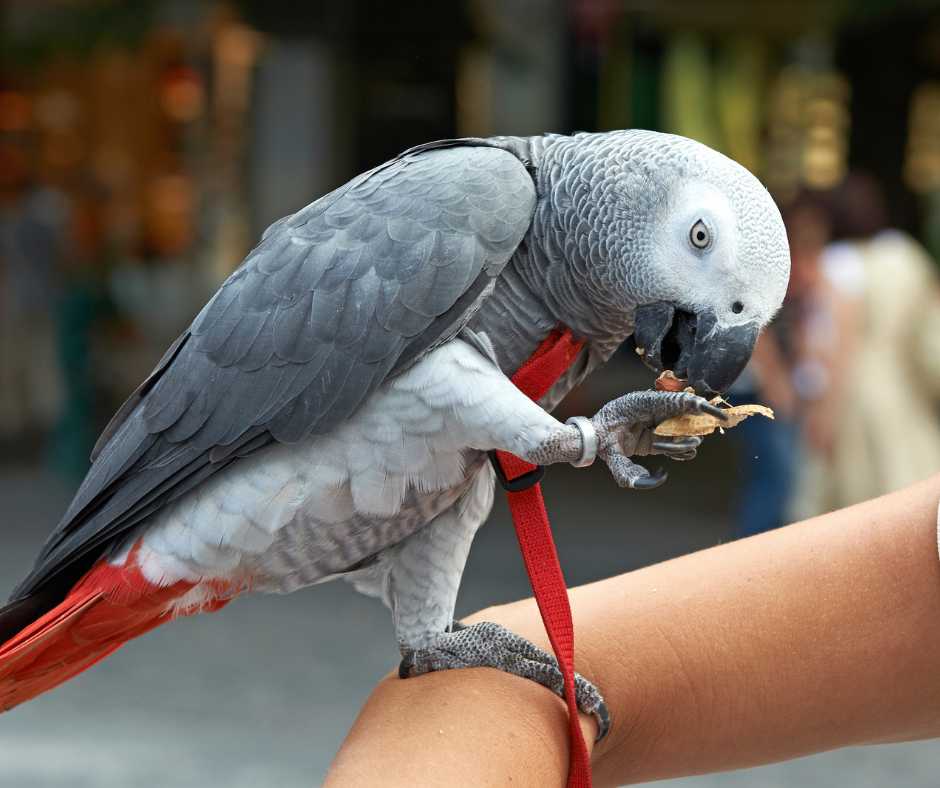
People Also Asked
How do you know if your bird is happy and healthy?
A happy bird is active, chatty, and has a healthy appetite. They’ll sport shiny, well-kept feathers. Signs of distress include lethargy, puffing up, or loss of appetite.
How Often Should You Clean the Bird’s Cage?
Daily tidying is essential – changing water, removing leftovers, and cleaning up droppings. Do a thorough cleaning of the cage and accessories weekly to maintain hygiene.
What’s the Best Way to Introduce a New Bird into My Home?
Start by placing the new bird’s cage close to your existing bird’s for them to see each other. Gradually allow supervised interactions outside the cage, watching their body language for signs of stress or aggression.
Do Birds Need Companions?
It depends on the species and the bird’s personality. While some birds enjoy the company of their kind, others are content with human interaction. If considering a companion, ensure a gradual and careful introduction.
Wrap Up
There you go! You’re now equipped with a treasure map to become a fantastic bird parent. Remember, this journey is sprinkled with learning curves, sprinkles of love, and a symphony of chirps and tweets.
Each step – from picking the right bird to mastering the art of bird care – shapes a unique bond between you and your feathered friend. Embrace every moment, keep asking questions, and continue learning because each day with your bird is a new adventure.
So, spread your wings together and soar into the exciting world of bird parenting. Here’s to happy birding and chirping good times ahead!

